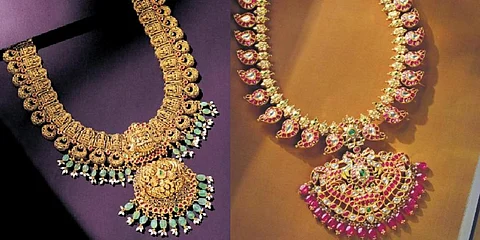

MUMBAI: When the Reserve Bank of India (RBI) decided to leave the repo rate unchanged last week, economists and analysts took it as a signal of a longer pause. This unexpected pause, which came after six back-to-back repo rate hikes in 11 months, shows the interest rate cycle has reached close to its turning point, they believe. While the market agrees there will be no more hike in near future, the pause has also triggered discussions about the possibility of rate cut this year.
As the interest rate cycle is expected to turn, the rate movement will have an impact on different assets and investors should relook at their investment strategy regarding mutual funds, fixed deposits and gold.
Debt funds turn attractive
The decision by the RBI to not hike rate this time created euphoria in the bond market, but the governor doused the excitement by clarifying that the pause was for just one meeting only and it might raise rates if inflation goes beyond its target.

However, the bond market is taking it as a long pause with no more hikes expected this year. As the prices are likely to cool down going forward, investors can invest in debt schemes of mutual funds to get inflation-beating returns.
“When interest rates trend lower, bond prices move up. For a given fall in interest rates, the longer the maturity or duration of bonds, the greater the increase in the price of bonds. The street estimates that both GDP and CPI inflation could be lower than RBI estimates, which will create room for interest rates to go down,” Sandeep Bagla, CEO, Trust Mutual Fund told TNIE.
“Investors in debt funds, especially those with longer maturities, could gain as they would benefit from capital gains generated by bonds held in the scheme over and above the interest income. Debt funds are looking attractive as they could generate handsome inflation-beating returns for the investors,” said Bagla.
Experts expect the bond yield to decline further in the current quarter and expect 10-year bond yields, which are currently hovering around 7.21% to trade in the 7.00-7.25% range. Instead of putting all the funds in single funds, investors should spread investments in multiple funds with different maturities.
“We need to keep in mind that this is currently a pause in rates and not a pivot or reversal of interest rates. Investors will therefore need to continue to run a strategy that uses a combination of short-term maturities and longer-term debt so that the strategy is well balanced,” Vishal Dhawan, Board Member, Association of Registered Investment Advisors told this newspaper.
Bank fixed deposits
With no further repo rate hikes expected this year, experts believe that the interest rates offered on the banks’ fixed deposits (FDs) are close to their peak. Driven by 250 bps rate hikes by the RBI since May 2022, banks have raised interest on FDs.
“Fixed deposits continue to be an attractive option and a mix of FDs maturing at different times is suggested to mitigate reinvestment risk and create a ladder of maturities,” said Dhawan.
Small finance banks are aggressive in attracting depositors and are offering higher interest on FDs compared to private and public sector banks. Banks are offering up to 7.50% interest on deposits with maturity of 1 year while 3-year deposits are luring depositors with interest of up to 8.10%. The interest on 5-year deposits is hovering in the 6.7% to 7.75% range.
“Though bank FDs are passive, partly illiquid, staid savings products, investors are advised to allocate some portion of their savings to bank FDs as well for mental comfort and steadiness in returns. Investors could ladder their bank FDs from 1-5 year maturities,” said Bagla.
Gold continues to glitter
The investment appeal of gold remains intact as the global economy moves from one crisis to another and policymakers try to figure out the intensity of recession, which is feared to hit Western economies in the coming months.
“We believe that gold should be a part of the asset allocation given the volatility we see around us in capital markets. At some point in time, we will see the interest rate cycle turn and central banks may cut rates at which point the dollar may lose its sheen which is positive for gold as an asset class,” Sameer Kaul, MD and CEO, TrustPlutus Wealth- a wealth advisory firm with Assets Under Management of around R 11,500 crore- told this newspaper.
Experts believe that there is still some steam left in the rally of gold prices, which touched an all time high recently. Gold prices reached a new high of R61,145 per 10 gram last week on MCX.
“Gold prices are continuously rising for the last month and prices have successfully sustained above major psychological resistance of $2000 (around R60,000 per 10 gm). The environment is still bullish and is expected to take prices 20% higher from current levels towards $2400 (around R70,000 per 10 gram) for gold in FY 2023-24,” Renisha Chainani, Head - Research, Augmont- Gold For All- a gold trading and research platform, told TNIE.
“For a recession-proof portfolio, one should allocate at least 20% of the portfolio to gold and silver. The best way to stay invested in these precious metals in a new financial year is to invest 50% in lumpsum at current prices and divide the rest 50% through Systematic Investment Plan (SIP) every month,” she added.
Instead of buying physical gold, investors can also explore other ways to invest in gold such as Exchange Traded Funds and gold bonds issued by the government.